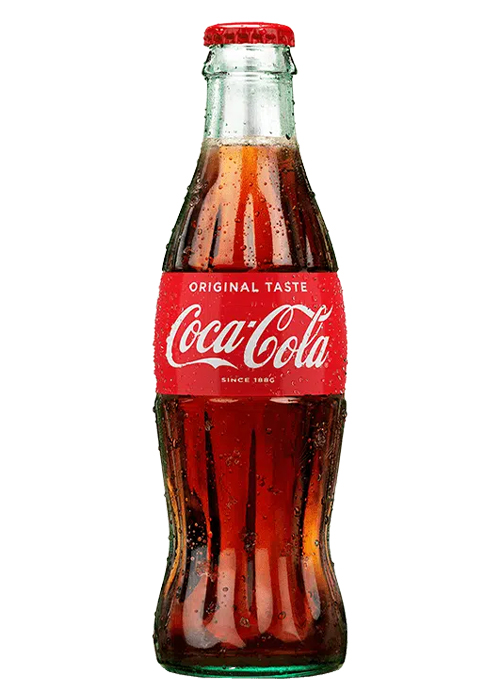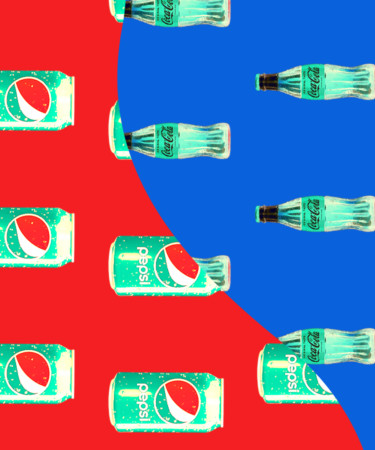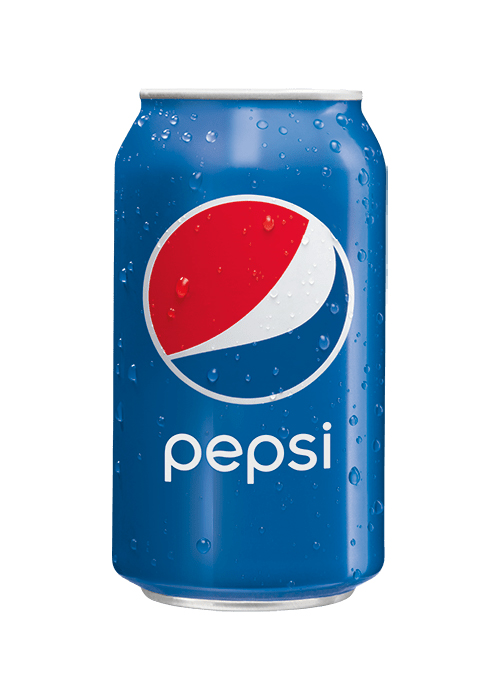Whether you’re a casual soda drinker or a soft drink fiend, odds are you have a strong opinion when it comes to the longstanding rivalry of Coca-Cola versus Pepsi.
The Coca-Cola Company and PepsiCo are two of the largest and most recognizable food and beverage brands in history, each with hundreds of products sold in markets worldwide. From television and print ads, to celebrity endorsements and iconic product placement in feature films, the companies’ influence knows no bounds. But despite their current international dominance, both of these megabrands had humble beginnings, originating in 19th-century pharmacies in the American South.
For all the Coca-Cola devotees and Pepsi fanatics out there, read on to learn more about the great Pepsi vs Coca-Cola debate, and how these two all-American sodas really compare.
Origin
Dr. John Pemberton, an Atlanta-based chemist, developed Coca-Cola’s original syrup in 1886. After Pemberton’s sweetly flavored creation was deemed “excellent” by a local pharmacy, it was mixed with carbonated water and sold for 5 cents a pop. Despite Pemberton’s role as the brainchild, the brand’s meteoric rise has been largely attributed to Frank M. Robinson, Pemberton’s bookkeeper, who is credited as the genius behind Coca-Cola’s name and iconic logo that still graces the company’s branding today.

Unfortunately, Pemberton would not get to experience the true worth of his invention. Following Pemberton’s death in 1888, fellow Georgian Asa G. Candler purchased the rights to the company for $2,300, and launched Coca-Cola into a full-fledged empire.
Two states over and nearly a decade later in 1893, Pepsi was invented by pharmacist Caleb Bradham in New Bern, N.C. Originally called “Brad’s Drink,” the unique tonic was sold at Bradham’s pharmacy where it became a popular beverage among the locals. In 1903 Bradham trademarked his product “Pepsi-Cola” and started selling it across the state. The brand’s reach continued to expand rapidly and, by 1910, there were 240 Pepsi-Cola bottling franchises in 24 states.
Flavor
Ask any soda drinker the biggest difference between Coke and Pepsi, and nine times out of 10, the answer will be that Pepsi is sweeter. That’s not surprising considering Pepsi has 2 more grams of sugar than Coke in a 12-ounce can (41 grams versus 39 grams).
But when considering Coca-Cola vs Pepsi and breaking down each product’s flavors and distinct characteristics, the answers vary. According to Business Insider, author Malcolm Gladwell famously summed up the difference between Coke and Pepsi in his book “Blink,” noting Pepsi’s “citrusy flavor burst, unlike the more raisiny-vanilla taste of Coke,” a difference likely resulting from Pepsi’s inclusion of citric acid. For others, Pepsi’s intensity is what distinguishes it from Coke, while some point to Coke’s higher sodium and more aggressive fizz.
Production
It’s not unusual for products to taste different depending on the country in which they are produced, and the same is true for Coke vs Pepsi. When it comes to Coke, that difference lies in the type of sweetener used — the product of an ongoing sugar trade war. “Mexican Coke,” which has become more popular in the U.S. as of late and demands a higher price tag, uses cane sugar instead of high-fructose corn syrup. As Smithsonian Magazine explains, for some aficionados, Mexican Coke’s addition of cane sugar makes it preferable, resulting in “a truer, less ‘chemical-y’ taste; a realer real thing.”
Cocktails
When it comes to an alcoholic drink that calls for a specific soda brand, Coke is the clear victor with not one, but two infamous combinations: Rum and Coke and Jack and Coke. Strangely, Pepsi doesn’t have an equivalent. According to VinePair, the origins of mixing Coca-Cola with rum can be traced back to 1902 when the brand was shipped to Cuba for use in its celebratory drink, the Cuba Libre. Later, in the U.S., a song titled “Rum and Coca-Cola” may have helped solidify its role as the perfect complement to rum.
What the Pros Think
Obviously people have thoughts when it comes to the great Pepsi vs Coke debate. For Michael Bray, the co-owner of cocktail and nightlife venues Ding-a-ling and Kind Regards in NYC, Coke’s accessibility and “iconic Americana” make it “available to any perspective or persuasion.” Plus, he adds that Coke “tastes rich and delicious.” But when it comes to Pepsi’s legacy, Bray can’t help give the brand credit. “We love the years of camp celebrity alignment that Pepsi has pursued, but the truth is, Coke hasn’t had to court anything other than a consistent product.” In the end, Bray is unabashedly Team Coke: “You can’t put a price on superior suds, and for 49 cents less, Pepsi is kinda like a hotdog without the mustard.”

